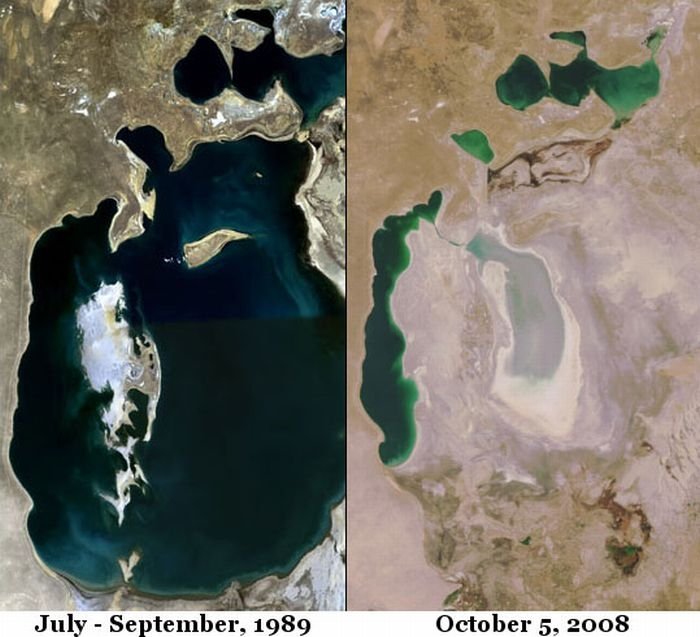|
|
The Aral Sea Is Almost Gone
|
The ecosystem the Aral Sea and the river deltas feeding into it has been nearly destroyed, not least because the much higher salinity. The receding sea has left huge plains covered with salt and toxic chemicals – the results weapons testing, industrial projects, pesticides and fertilizer runf – which are picked up and carried away by the wind as toxic dust and spread to the surrounding area. The land around the Aral Sea is heavily polluted and the people living in the area are suffering from a lack fresh water and health problems, including high rates certain forms cancer and lung diseases. Respiratory illnesses including tuberculosis (most which is drug resistant) and cancer, digestive disorders, anaemia, and infectious diseases are common ailments in the region. Liver, kidney and eye problems can also be attributed to the toxic dust storms. Health concerns associated with the region are a cause for an unusually high fatality rate amongst vulnerable parts the population. There is a high child mortality rate 75 in every 1,000 newborns and maternity death 12 in every 1,000 women. Crops in the region are destroyed by salt being deposited onto the land. Vast salt plains exposed by the shrinking Aral have produced dust storms, making regional winters colder and summers hotter.
The Aral Sea fishing industry, which in its heyday had employed some 40,000 and reportedly produced one-sixth the Soviet Union's entire fish catch, has been decimated, and former fishing towns along the original shores have become ship graveyards. The town Moynaq in Uzbekistan had a thriving harbor and fishing industry that employed approximately 30,000 people ; now it lies miles from the shore. Fishing boats lie scattered on the dry land that was once covered by water; many have been there for 20 years. The only significant fishing company left in the area has its fish shipped from the Baltic Sea, thousands kilometers away.
Also destroyed is the muskrat trapping industry in the deltas Amu Darya and Syr Darya, which used to yield as much as 500,000 muskrat pelts a year.
|
|









